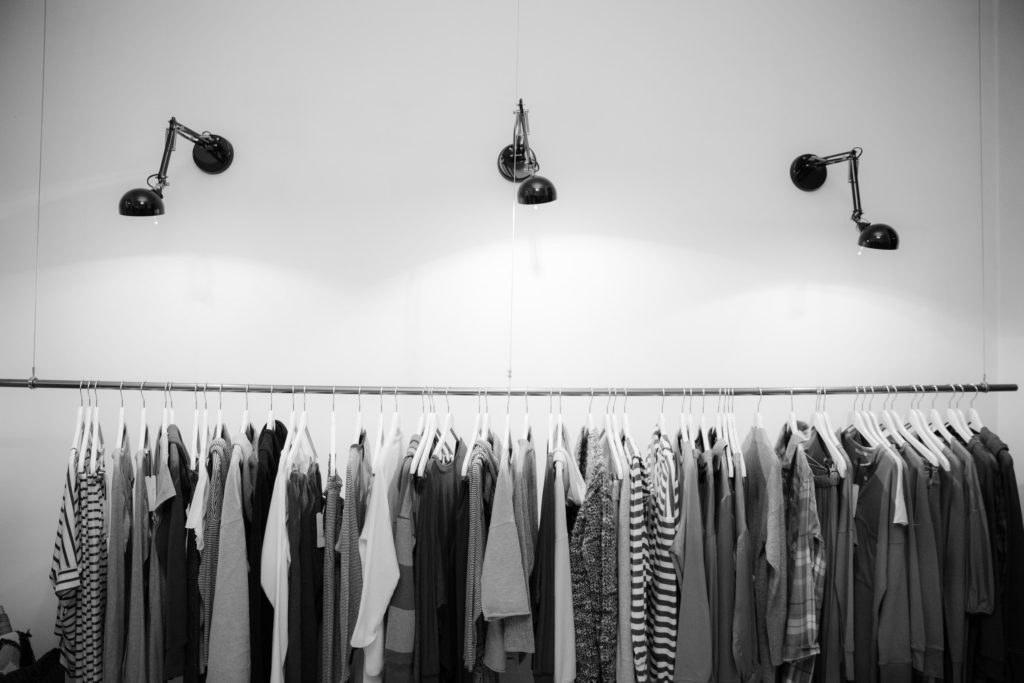In this article, I want to share a little insight to the fashion industry and why they are over-producing.
There are many things that contribute to this and ultimately these are the reasons why I decided to pursue a pre-ordering system.
Eco-friendly clothing but not so eco-friendly?
I started to think, even if your clothes are eco-friendly, it’s not really eco-friendly if all these clothes sit in the storage unsold. Excess inventory is a big problem in fashion.
Isn’t there a better way to make clothes?
Why fashion companies are over-producing in the first place?
Here are some of the reasons why.
The More You Make, The Cheaper It Gets
In clothing production, MOQ or minimum order quantity is a regular term thrown around in the conversation.
Manufactures in local areas (Melbourne in my case) have minimums of between 50 – 100 units per style, per colour. That’s pretty good!
Though making it locally, it will increase the make price of each garment because we have higher labour cost in Australia.
Overseas suppliers will often have lower prices because labour and material costs are lower in some of these countries. But often with higher minimums.
So minimums can be challenging for small independent designers or someone just starting out.
But that’s not an issue with fashion giants.
They have an operation of mass scale production of thousands and hundred-thousands of units per style.
That’s a lot of clothes.
Just imagine making a whole collection at that kind of level.
By placing huge order quantities, these companies have more negotiation power with the suppliers.
Why Some Clothes are Super Cheap?
These companies will also lower their margin and make profit through volume.
Ultimately, that’s how clothes can be sold at such low prices.
I have hard time understanding when I see t-shirts as cheap as a cup of coffee.
On a side note, luxury brands would produce much lower volume but will have much higher margin.
For example, a haute couture dress will cost a lot of money to make where there’s a team hand-sewing the dress from their fashion house in Italy.
So, they will make profit through their higher margin instead.
Going back to high volume production – it all sounds great from a business stand point. But over the years this has caused other problems.
More Clothing, More Waste
Typical clothing production evolves from design, production and to the sale of the product.
Companies will forecast their sales and calculate stock quantity they will order.
This forecast, however, is never accurate as you will never know exactly what you will sell.
But that’s not exactly the reason why they are over-producing in the first place.
Logistically Easy
For many companies, it’s logistically easier to over-produce and deal with the excess later.
Companies wouldn’t want to under-produce and miss out on sales either.
They also have to ensure all their stores are filled up with stock.
Therefore, it’s easier to have more than not enough.
Destroy the Excess
Few years back, some luxury companies have been scrutinised heavily over the media for destroying millions of dollars’ worth of clothing and cosmetics.
Excess inventory that sits in their warehouses unsold, or we call it dead stock, eventually will be sent to landfill or to another facility to be destroyed.
It’s such a wasteful thing to do. All the labour, resources, energies and materials that took to make these clothes are just simply destroyed because they made too many.
Poor Quality
Fast fashion brands are pumping out new looks every month or even every week.
Selling clothes at a very competitive price has enticed people to buy more clothes on regular basis.
I’m not trying to say buying clothes are bad. But looking at clothes that were made so cheaply, a lot of them are not exactly something that will last forever.
Sure, you can look after your clothes well and repairing them if needed. That will last you longer. But for how long?
Clothing Waste
According to an article from The Guardian – on average, Australians buy almost 15kg of clothes each year and 10kg ends up in the landfill.
Part of the reason could be the poor quality of these clothes that are never made to last so people go back to spend more on new clothes.
Shoppers’ Mentality
On the other hand, with growth of internet and social media have opened up to more information on our mobile phones. There is never a moment we don’t see advertisements trying to sell you things.
Our feeds are flooded with beautiful ads of how great your life will be when you wear this new item.
The mentality of buying new clothes have changed from what it used to be twenty to thirty years ago.
Clothes were often handed down through the family, repaired and maintained where necessary.
Clothes were something we used to keep for decades.
But we no longer consume clothing that way.
Conclusion
– Fashion giants over-produce so they don’t run out of stock and miss out on their sales.
– Creating more clothes creates more waste.
– Excess inventory or dead stock ends up in landfill or destroyed.
– Consumers’ mentality and buying behaviour has changed over the years through social media, internet and marketing.
